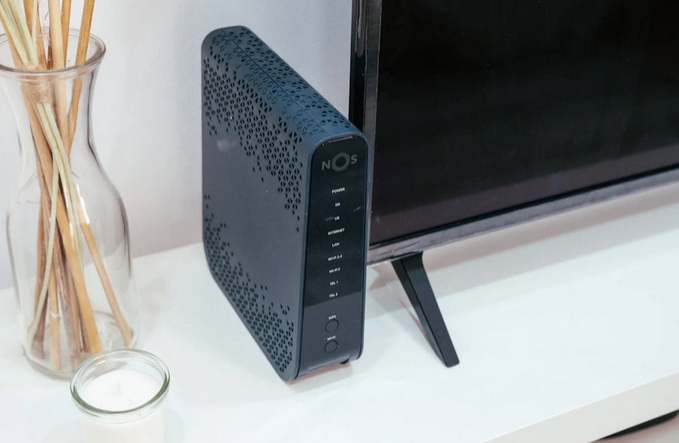Why Your Wi-Fi Hates You at 3 PM (And How to Fix It Forever)
Picture this: it’s 3 PM, and you’re settling in for your daily binge of the latest season of your favorite show. Just as you hit play, your Wi-Fi decides it’s time to take a break. The video buffers, the screen freezes, and you’re left staring at that spinning wheel of doom. Frustrating, right?
You’re not alone in this struggle. Many people experience similar connectivity issues during peak hours. But what causes this dilemma? Why does Wi-Fi seem to have its own schedule? Let’s dive into the reasons behind these pesky interruptions and explore how you can regain control over your internet speed—once and for all!
The ‘Netflix Rush Hour’
 The term “Netflix Rush Hour” might sound amusing, but it’s a real phenomenon. Around 3 PM, millions of viewers log on to stream their favorite shows. This surge in traffic creates significant congestion. Imagine rush hour traffic on the freeway, but instead of cars jamming the road, it’s data packets flooding your Wi-Fi network.
The term “Netflix Rush Hour” might sound amusing, but it’s a real phenomenon. Around 3 PM, millions of viewers log on to stream their favorite shows. This surge in traffic creates significant congestion. Imagine rush hour traffic on the freeway, but instead of cars jamming the road, it’s data packets flooding your Wi-Fi network.
Each household is vying for bandwidth and only so much can flow through at once. During this peak time, streaming services like Netflix consume massive amounts of data. When everyone hits play simultaneously, even the strongest connections can falter under pressure. You may notice slower speeds during these hours when you’re trying to catch up on episodes or binge-watch new releases.
Your Neighbor’s Router Is Literally Fighting Yours
Ever feel like your Wi-Fi sabotages you right when you’re about to hit send? Turns out, it’s not just bad luck. Picture this: your neighbor’s router is basically shouting over yours in a digital turf war. When too many routers blast signals on the same frequency, they turn your internet into a gladiator arena—where everyone’s connection fights to the death for bandwidth.
This battle can worsen during peak hours, like after school or work when everyone logs on simultaneously. If both routers are using overlapping channels, it creates a digital tug-of-war. You might think you’re alone in this struggle, but chances are others nearby are feeling the strain too.

Sunlight Can Mess With Wi-Fi
Sunlight can be a sneaky disruptor of your Wi-Fi signal. Direct sunlight hitting your router might seem harmless, but it can lead to overheating. An overheated device struggles to transmit data effectively. Moreover, UV rays can weaken the materials used in many routers over time. This gradual degradation affects performance and range, leaving you grappling with slower speeds.
Windows also play a role. If your router is stationed near glass that allows sunlight to pour in, interference may occur due to reflections or heat trapped inside. Even indoor plants placed too close can absorb some of those precious signals if they’re substantial enough. So before blaming slow internet on external factors, consider how much sunshine your setup gets daily!
Your ISP’s Dirty Little Throttling Secret
You may think you’re getting the speed you pay for, but there’s a chance your Internet Service Provider (ISP) is pulling some sneaky moves. Throttling—when ISPs deliberately slow down your internet connection—is more common than you’d like to believe. During peak hours, many providers throttle users to manage network congestion. They prioritize certain traffic types while leaving others in the dust. Streaming services often take the brunt of this slowdown, making that afternoon binge-watch feel painfully sluggish. But why would they do this? For one, it helps them maintain overall service quality across their entire customer base.
However, as a subscriber paying for high-speed access, it feels frustrating and unfair. To expose this dirty little secret, keep an eye on your speed during different times of the day. If you notice significant drops at 3 PM regularly, it’s time to rethink how you approach Wi-Fi usage and what options might be available beyond your current plan.
How to ‘Schedule’ Your Wi-Fi for Peak Speeds

If you’re tired of battling slow Wi-Fi speeds, scheduling your usage can be a game changer. Think about when you really need that high-speed connection. If evenings are prime time for streaming or gaming in your household, consider adjusting your router settings to prioritize bandwidth during those hours.
Many modern routers offer Quality of Service (QoS) features. This allows you to allocate more speed to specific devices or applications at certain times. For instance, if the kids are streaming cartoons after school at 3 PM, set the router to give them priority until dinner time.…
Read More »




 Another essential feature of the helmet is the lens. Two options are available, and you can choose one depending on which one is the most comfortable for you. These two options include passive and auto-darkening lenses. Just like what its name suggests, a passive lens does not have an automatic adjustment to darken the shade when the light intensity changes. However, the lens is equipped with infrared filters to protect the eyes from damage.
Another essential feature of the helmet is the lens. Two options are available, and you can choose one depending on which one is the most comfortable for you. These two options include passive and auto-darkening lenses. Just like what its name suggests, a passive lens does not have an automatic adjustment to darken the shade when the light intensity changes. However, the lens is equipped with infrared filters to protect the eyes from damage.